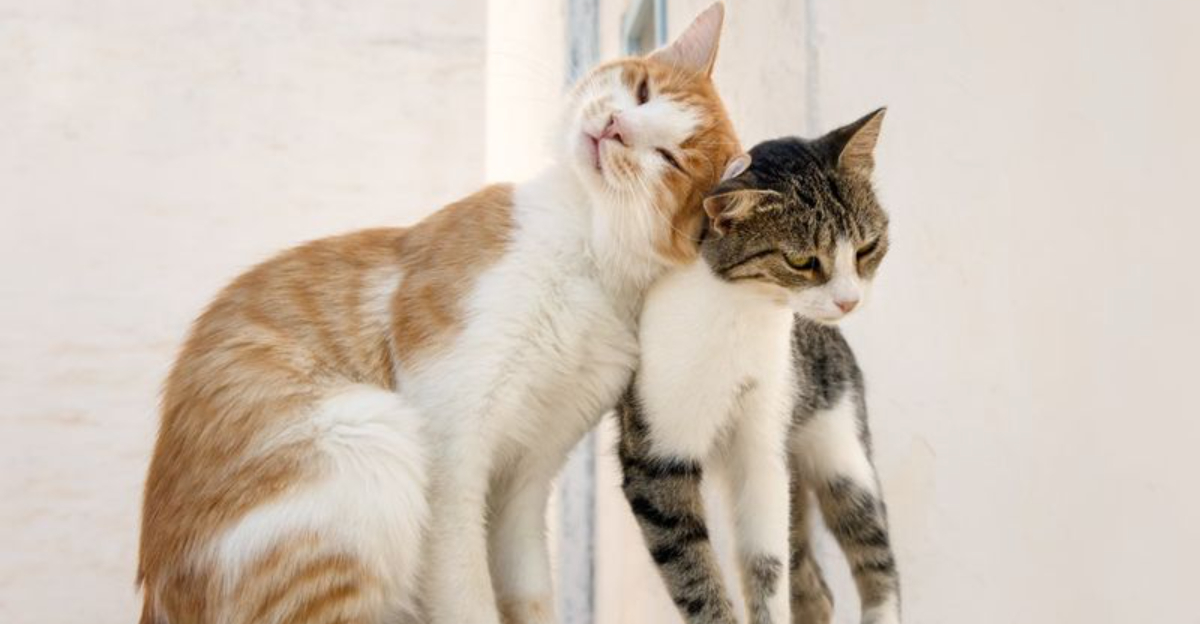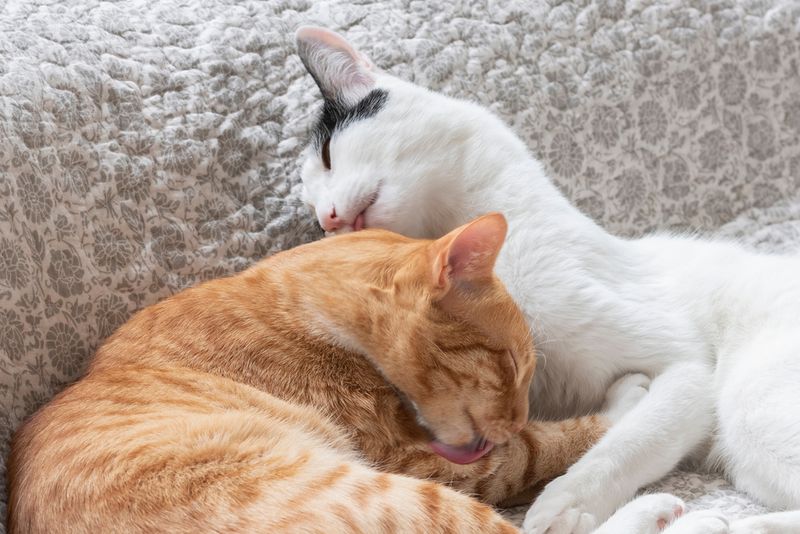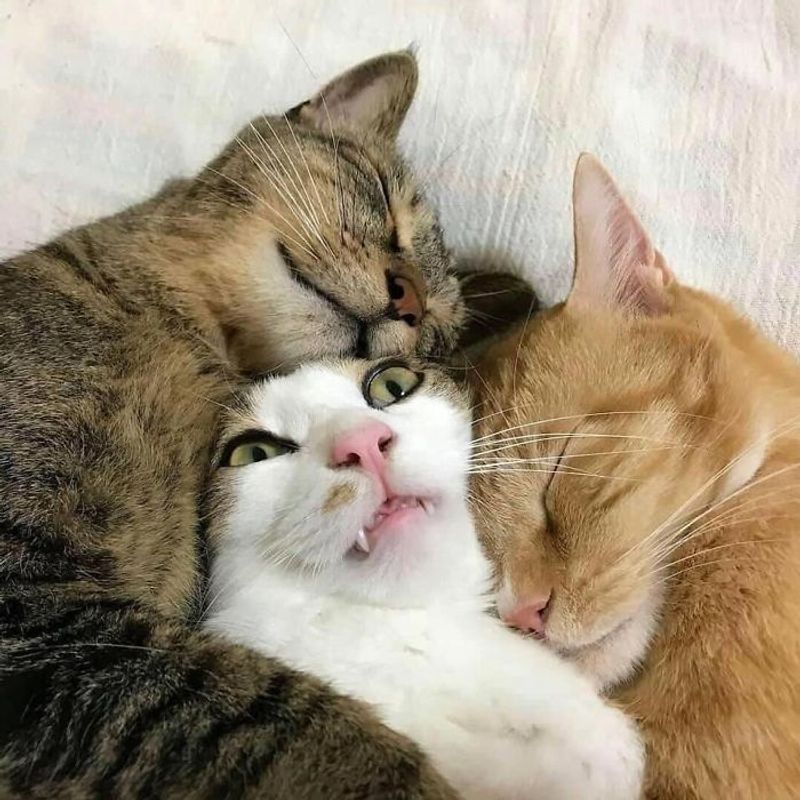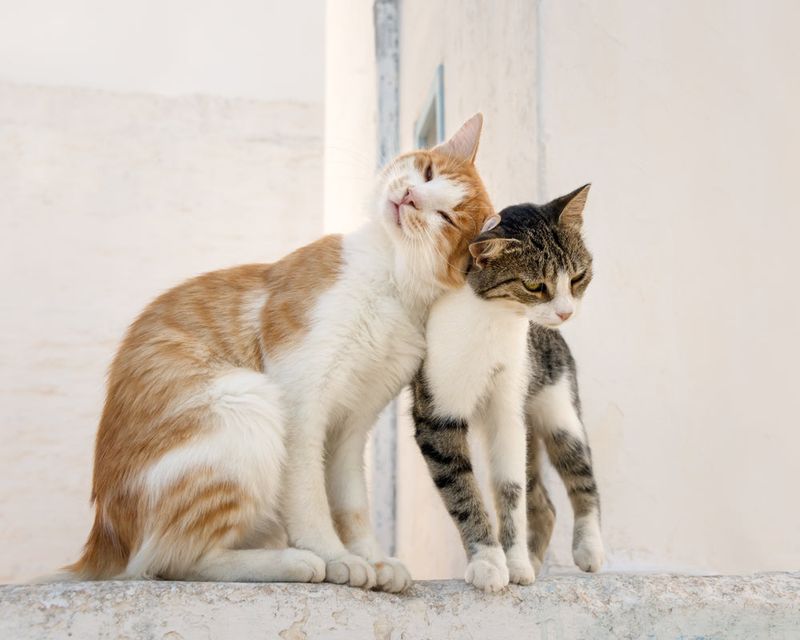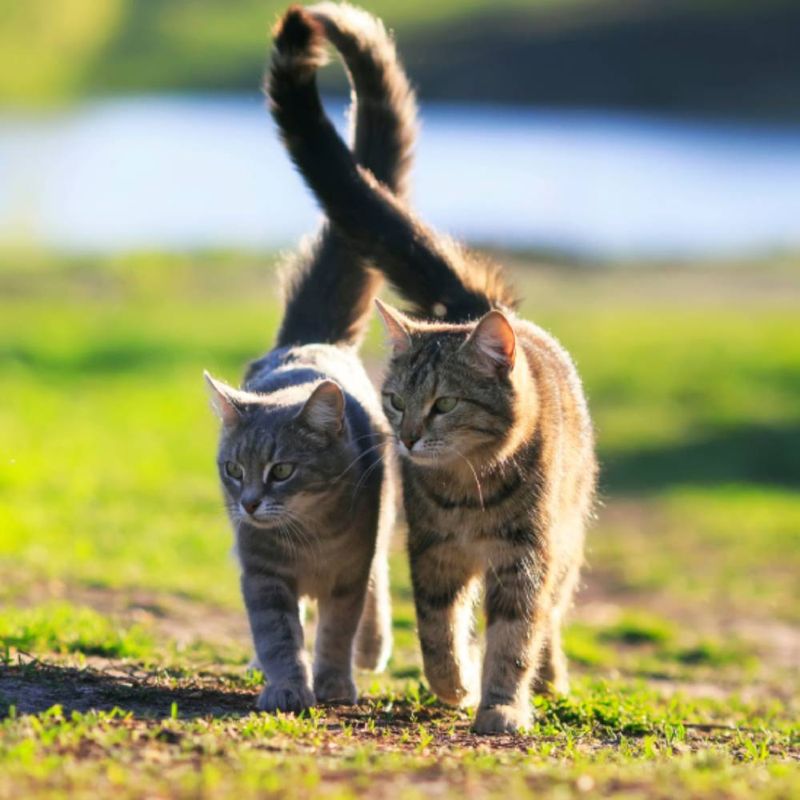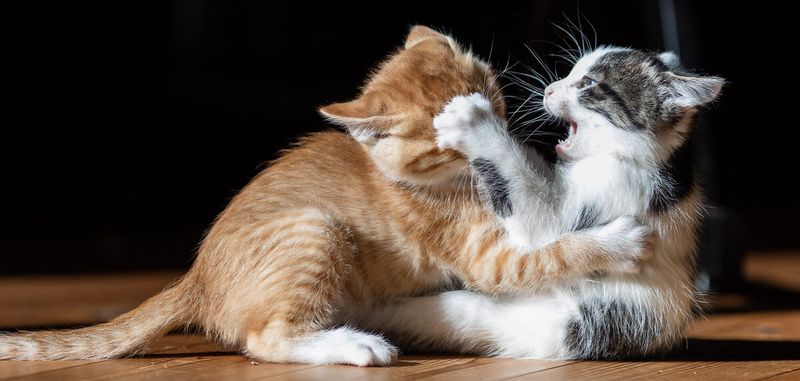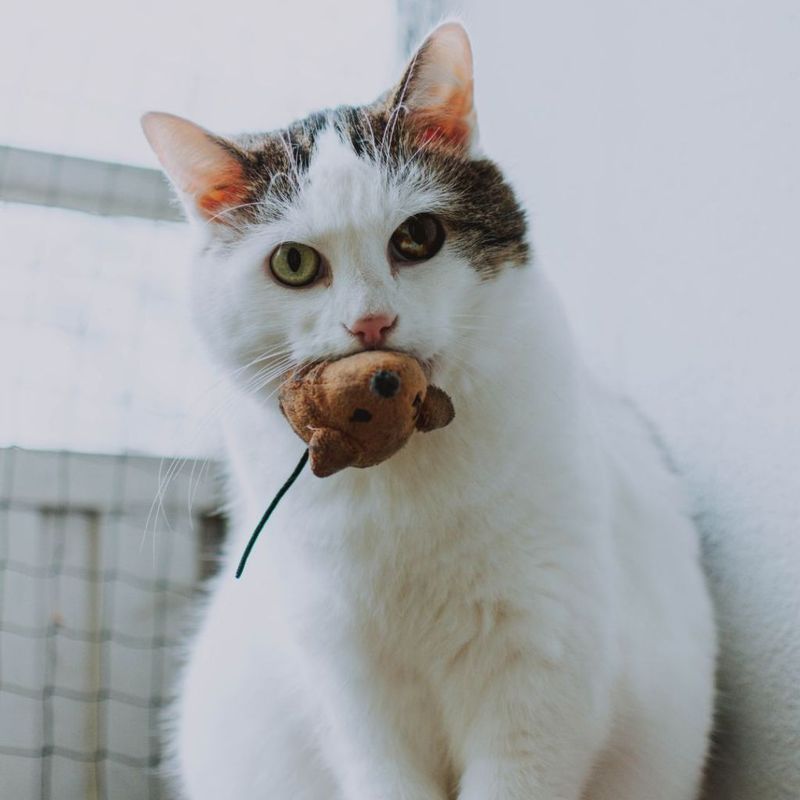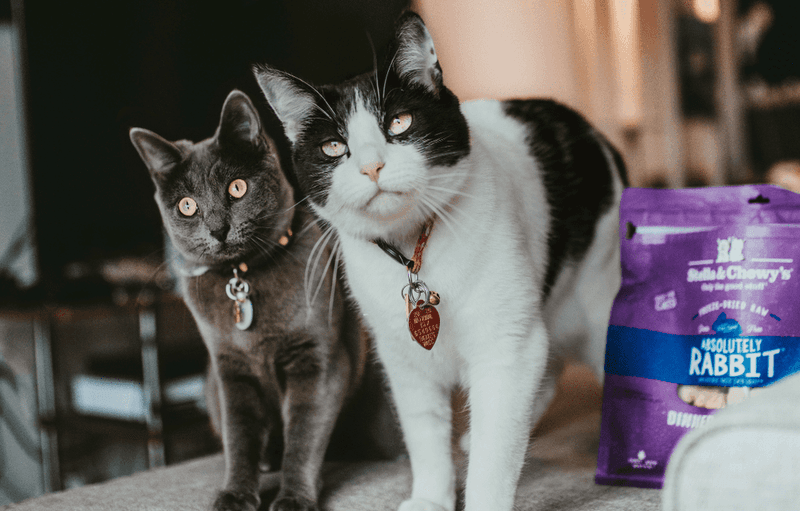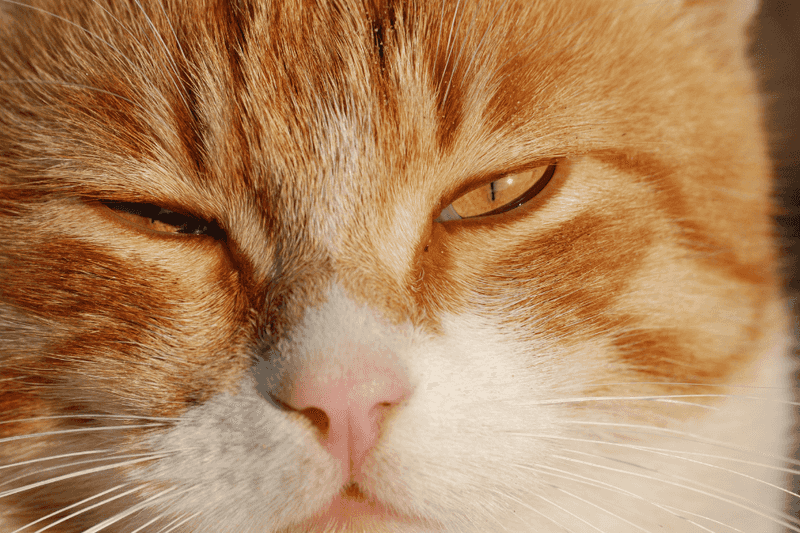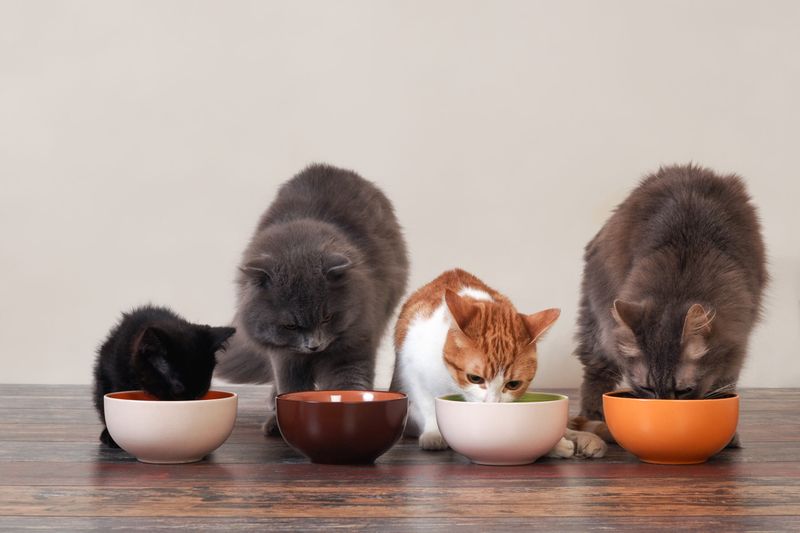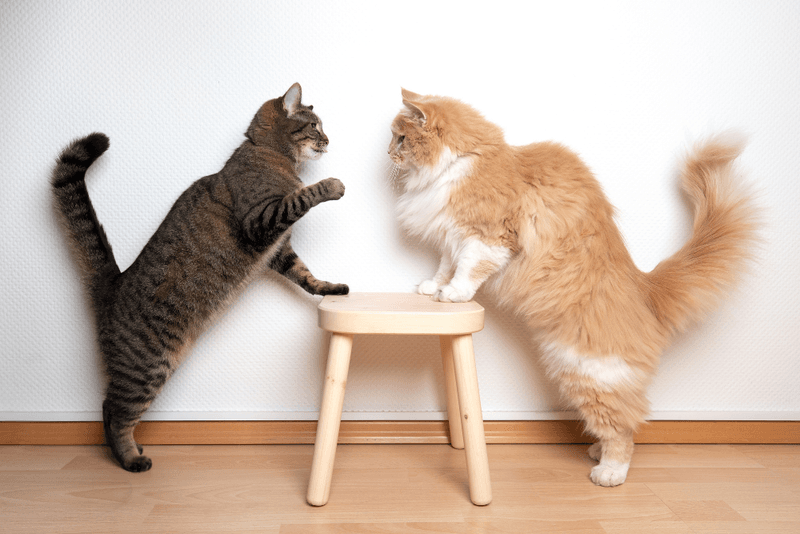📖 Table of Content:
- 1. Grooming Each Other (Allogrooming)
- 2. Sleeping Together or Touching While Resting
- 3. Head Butting and Face Rubbing (Bunting)
- 4. Tail Twining or Wrapping
- 5. Mutual Play
- 6. Bringing Gifts (Even Weird Ones)
- 7. Following Each Other Around
- 8. Slow Blinking
- 9. Sharing Resources Without Conflict
- 10. Vocalizing in a Soft, Friendly Way
While their way of expressing affection may not be as exuberant as a dog’s wagging tail or face lick, cats form genuine, complex relationships with both other animals and humans. These bonds are often filled with subtle yet powerful signs of trust and connection that may go unnoticed by the untrained eye.
Understanding feline friendship requires tuning into their world—a world rich in scent, body language, and gentle rituals. Unlike pack animals, cats typically form social structures based on personal choice, proximity, and comfort. When a cat chooses to bond with another, whether it’s a furry companion or a human, it’s a meaningful gesture that reflects a deep level of comfort and emotional safety.
In this article, we’ll uncover 10 distinct ways cats express friendship. From grooming rituals to playful antics, these behaviors reveal a softer, social side of your feline friend. Learning to recognize these signs can deepen your relationship with your pet and help you better understand the dynamics between multiple cats in your home. Whether you’re a long-time cat lover or a new feline guardian, these insights will bring you closer to the cats in your life. Let’s explore the language of cat friendship—one soft purr and slow blink at a time.
1. Grooming Each Other (Allogrooming)
Mutual grooming, or allogrooming, is one of the most heartwarming ways cats express friendship. It typically involves licking around the head and neck—areas that are hard for cats to reach on their own. This behavior shows not only affection but also trust, as grooming places them in a vulnerable position. Cats reserve this kind of closeness for companions they feel secure around. If you see one cat grooming another, it’s a strong sign that a social bond has formed. They’re not just keeping each other clean—they’re reinforcing a partnership. Grooming helps distribute shared scents, signaling to others that the cats are part of the same social group.
2. Sleeping Together or Touching While Resting
When two cats nap in contact, it’s more than just a convenient way to stay warm. They’re demonstrating a high level of emotional security with one another. Whether it’s a head on a paw, a tail draped over a buddy, or full-body snuggling, shared rest means shared trust. In the wild, sleep is when animals are most vulnerable, so choosing to snooze together speaks volumes. This behavior is also a strong sign that the cats are bonded companions rather than just cohabiting. Some cats will even position themselves facing each other to maintain visual contact as they doze. You can often tell how close cats are based on how much physical closeness they seek during sleep.
3. Head Butting and Face Rubbing (Bunting)
Bunting is more than just a quirky behavior—it’s a deeply social act. When a cat bumps or rubs their head against another cat, a dog, or even you, they’re depositing facial pheromones that signal familiarity and comfort. It’s a bit like saying, “You’re mine, and I like it that way.” These pheromones are unique to each cat and help build a shared scent identity among bonded individuals. While it may seem subtle, this action carries emotional weight in the feline world. Cats rarely bunt strangers or unfamiliar animals unless they’ve deemed them safe. If your cat greets you with a head butt, take it as a warm compliment.
4. Tail Twining or Wrapping
Curled tails between cats are like hand-holding in the human world—gentle, intimate, and affectionate. You might see two cats walking side-by-side, tails entwined, which suggests a synchronized relationship. This contact helps reinforce social bonds through both tactile and scent cues. Some cats may also wrap their tails around human legs as a form of greeting or invitation to interact. While it can sometimes signal curiosity, when paired with purring or soft eyes, it’s clearly friendly. It’s not a behavior cats share with just anyone—they reserve it for those in their inner circle. When you see tail twining, you’re witnessing a quiet act of devotion.
5. Mutual Play
Playful interaction between cats can be a powerful indicator of friendship, especially when it’s balanced and consensual. One cat might initiate a game of chase, then let the other take a turn being the “hunter” or “prey.” This back-and-forth dynamic demonstrates trust and respect. While roughhousing can look intense, true play doesn’t involve hissing or growling—just pouncing, batting, and gentle wrestling. Cats that play together often stay together, as play builds confidence and camaraderie. Even older cats will engage in social play with close friends, albeit at a slower pace. If your cats often chase each other around the house and then rest side-by-side, their friendship is likely strong.
6. Bringing Gifts (Even Weird Ones)
Though it might seem gross to us, a cat bringing you a toy—or a dead bug—is a generous act of bonding. In their minds, they’re providing for you as they would for a friend or kitten. It reflects a mix of caregiving instinct and shared experience. Cats that feel closely connected may also drop gifts at the paws of another cat or pet. These offerings can be play objects, food, or items they’ve “hunted” in the home. It’s their way of saying, “I thought of you.” Instead of recoiling, respond with praise—it encourages the affectionate behavior behind the gesture.
7. Following Each Other Around
Trailing a fellow feline or human is more than curiosity—it’s a sign of admiration and interest. Cats don’t waste energy following others unless they’re emotionally invested. You might notice one cat shadowing another from room to room, staying within eyesight at all times. This is their way of staying connected and engaged, even if they’re not touching. Some cats will meow gently or chirp as they follow, further expressing their friendly intent. It can even signal that they look up to the other cat as a kind of mentor or leader. This low-key companionship is one of the clearest signs of cat friendship.
8. Slow Blinking
Nothing says “I trust you” like a soft, slow blink from a cat. In feline body language, this is the equivalent of a loving smile. When a cat blinks slowly at another, they’re signaling that they’re relaxed, unafraid, and receptive. It’s often a two-way exchange, where both parties take turns blinking at each other in a peaceful rhythm. Humans can participate too—try blinking slowly at your cat and watch them respond in kind. Between cats, this behavior is common among bonded pairs who feel completely safe together. It’s subtle, but in cat language, it’s one of the most tender expressions of affection.
9. Sharing Resources Without Conflict
Living peacefully is a strong sign of a healthy friendship in multi-cat households. Cats that willingly share food bowls, beds, or litter boxes without signs of aggression are socially well-adjusted companions. You’ll notice that they often eat side-by-side or nap in shared spaces. Dominant or territorial cats typically guard resources, so the absence of this behavior suggests mutual respect. This harmony is especially impressive because cats are natural solitary hunters. When they adapt to sharing, it means they’ve formed a strong, cooperative bond. Observing your cats’ resource-sharing habits can give you insight into the strength of their relationship.
10. Vocalizing in a Soft, Friendly Way
A gentle trill or soft meow between cats is more than noise—it’s a vocal gesture of friendship. These sounds are rarely used in aggression and are often directed toward familiar companions. You may hear these sweet vocalizations during greetings, play invitations, or while snuggling. Cats don’t typically “talk” to strangers in this way, so it’s a privilege when they share it with each other—or with you. Some cats are more vocal than others, but friendly tones are usually higher-pitched and short in duration. These sounds can even serve to coordinate movement or signal affection. When your cat chirps at you or another pet, it’s a conversational cue of connection.
